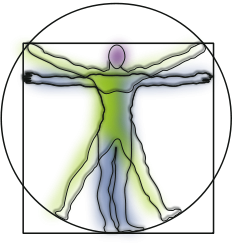 Back pain is common during pregnancy with research showing between 50-80% of pregnant patients reporting low back pain. It is good for expectant women to be informed about some of the options available to alleviate pain as well as what they can do for themselves to ensure a healthy pregnancy. Some women may feel anxious or unsure about seeking chiropractic care during pregnancy especially if they have never experienced chiropractic before – but they need not be. Let’s explore some of the frequently asked questions regarding chiropractic care and pain during pregnancy…
Back pain is common during pregnancy with research showing between 50-80% of pregnant patients reporting low back pain. It is good for expectant women to be informed about some of the options available to alleviate pain as well as what they can do for themselves to ensure a healthy pregnancy. Some women may feel anxious or unsure about seeking chiropractic care during pregnancy especially if they have never experienced chiropractic before – but they need not be. Let’s explore some of the frequently asked questions regarding chiropractic care and pain during pregnancy…
Why is there back pain during pregnancy?
There are many mechanical, postural and hormonal changes that take place in a woman’s body during pregnancy. Below are just a few examples of typical changes.
Mechanical & postural changes:
-
centre of gravity moves back therefore changing the mechanical stresses on joints, muscles and ligaments
-
weight gain results in increased overall stress to joints and muscles
-
muscles of low back must work more to counterbalance growing belly
-
low back curve often becomes accentuated which pinches the joints of the low back and sacroiliac joints closer together resulting in joint irritation
-
along with accentuation of the lumbar curve, the sacrum itself tilts forward at its base
-
increased breast size can result in mid-back pain as the muscles and joints of the mid-back must compensate
-
often there is a change in neck position with loss of the normal curvature of the neck
-
women tend to adopt a wider based stance and gait which affects joint position of ankles, knees and hips resulting in joint/muscle/ligament irritation
-
pressure may be exerted on nerves due to muscle tension and water retention resulting in tingling or numbing sensations
Hormonal changes:
-
hormonal changes in pregnancy also affect biomechanics of the spine and peripheral joints
-
a hormone called relaxin is released which softens and elongates ligaments and other connective tissues which leads to greater joint motion and possible joint irritation
As one can see, there are indeed myriad changes that occur. On top of this, minor pre-existing mechanical issues may be exacerbated during pregnancy due to the weight gain and hormonal effects.
How can chiropractic help?
Through a history and physical examination, chiropractic can identify specific problem areas in the spine and surrounding joints. Chiropractic adjustments help to restore proper motion and alignment of joints. In addition, specific corrective exercises are prescribed to help improve posture such that tight muscles are stretched and relatively weaker muscles are strengthened. Beyond this, chiropractic helps by balancing the nervous system which allows the body to heal optimally. Most pregnant women who experience chiropractic care report relief of symptoms and associated improved mood and sleep. Best of all, chiropractic is completely natural and non-invasive. Chiropractors do not prescribe medications which can be of concern especially during pregnancy. There is a special technique used during pregnancy – called Webster’s Technique – which helps balance the alignment of the pelvis – a common area of pain during pregnancy.
Is chiropractic treatment safe during pregnancy?
Chiropractic care is natural, non-invasive and very safe for both mom and the developing baby. Chiropractors are also trained to identify red flags associated with high risk pregnancy and to refer accordingly.
What else can I do for relief and to ensure a healthy pregnancy?
Maintaining physical fitness through exercise is a great way to promote better health and fewer complications. Regular cardiovascular exercise leads to improved sleep, less pain, less stress, fewer delivery complications and has better birth outcomes for both mother and child. It also reduces the risk for gestational diabetes and pregnancy related hypertension and the associated consequences for both mom and developing baby. A balanced and nutritious diet is also important, ensuring that the fetus has the necessary building blocks for healthy development and mom is healthy too. Other ideas for pain relief include massage and acupuncture.
Following delivery, back pain usually resolves however daily activities such as lifting one’s child, bending down to their level, breast feeding and awkward postures associated with raising a child may result in mechanical issues. Thus, some women may choose to continue with chiropractic care during this phase as well to ensure optimal joint mechanics and overall wellness.
-
Stuber and Smith (2008). Chiropractic for back pain in pregnancy. Journal of Manipulative and Physiological Therapeutics; 31(6):447-454.
-
Jones, Housman & McAleese (2010). Exercise, nutrition and weight management during pregnancy. American Journal of Health Studies; 25(3):120-126.
Dr. Elisabeth Miron
Looking for a pregnancy chiropractor in Aurora? Dr. Elisabeth Miron helps many pregnant women find natural relief for their back pain and pelvic pain by using gentle techniques to balance the body’s alignment. Visit her website here.


